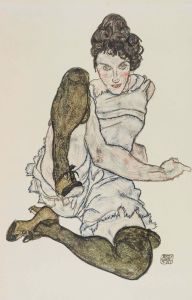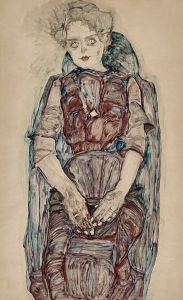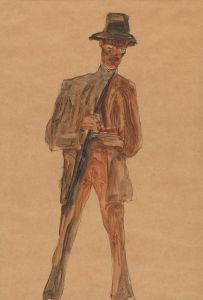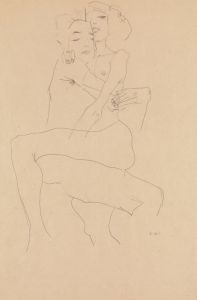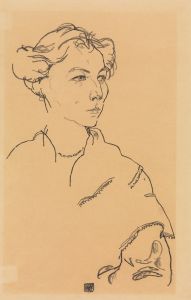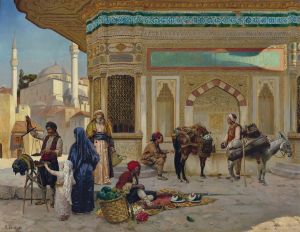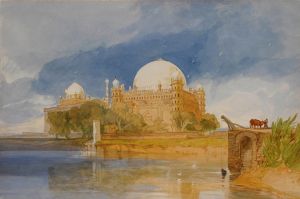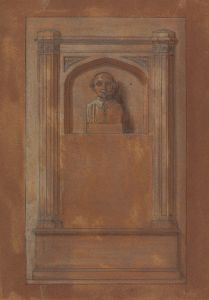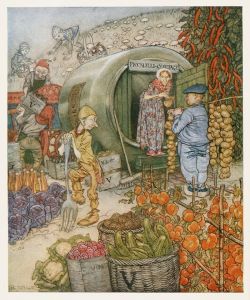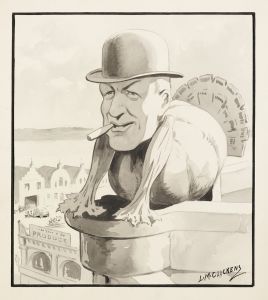
Venus von Willendorf
A hand-painted replica of Egon Schiele’s masterpiece Venus von Willendorf, meticulously crafted by professional artists to capture the true essence of the original. Each piece is created with museum-quality canvas and rare mineral pigments, carefully painted by experienced artists with delicate brushstrokes and rich, layered colors to perfectly recreate the texture of the original artwork. Unlike machine-printed reproductions, this hand-painted version brings the painting to life, infused with the artist’s emotions and skill in every stroke. Whether for personal collection or home decoration, it instantly elevates the artistic atmosphere of any space.
Egon Schiele was an Austrian painter known for his distinctive style and significant contribution to the early 20th-century art movement known as Expressionism. He was a protégé of Gustav Klimt and is renowned for his intense and often provocative works. Schiele's art is characterized by its raw emotional intensity, bold lines, and the exploration of human sexuality and form.
One of Schiele's works is titled "Venus von Willendorf." This piece is a drawing rather than a painting and was created in 1908. The title of the work references the "Venus of Willendorf," a famous prehistoric statuette discovered in 1908 near the town of Willendorf in Austria. The statuette is believed to date back to around 28,000–25,000 BCE and is one of the most well-known examples of prehistoric art. It represents a female figure and is often interpreted as a symbol of fertility.
Schiele's "Venus von Willendorf" drawing reflects his interest in the human form and his exploration of themes related to sexuality and identity. The drawing is a reinterpretation of the ancient statuette, showcasing Schiele's unique style and perspective. Unlike the original statuette, which is a three-dimensional sculpture, Schiele's work is a two-dimensional representation, emphasizing line and form.
The drawing is part of Schiele's broader body of work that often focused on the human body, particularly the female form. His approach was both innovative and controversial, as he frequently depicted his subjects in unconventional poses and with exaggerated features. This was part of his effort to convey deeper emotional and psychological states, challenging traditional representations of beauty and form.
Egon Schiele's career was relatively short, as he died at the age of 28 in 1918 during the Spanish flu pandemic. Despite his brief life, Schiele left a lasting impact on the art world. His works continue to be celebrated for their emotional depth and technical skill. Schiele's exploration of themes such as sexuality, identity, and the human condition resonate with audiences and have influenced countless artists.
The "Venus von Willendorf" drawing, like much of Schiele's work, is housed in various collections and has been exhibited in numerous retrospectives dedicated to his art. Schiele's legacy is preserved through these exhibitions and the continued study and appreciation of his work. His contributions to Expressionism and modern art remain significant, and his reinterpretation of historical and cultural symbols, such as the Venus of Willendorf, highlights his innovative approach to art and his ability to connect past and present themes.
In summary, Egon Schiele's "Venus von Willendorf" is a notable example of his artistic exploration of the human form and his reinterpretation of historical symbols. Through his distinctive style and emotive expression, Schiele has secured his place as a pivotal figure in the history of modern art.





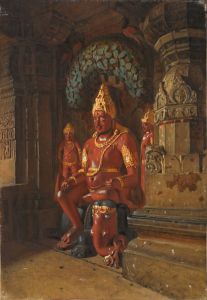
![Temple of Edfou [Idfû], ancient Appolinopolis, Upper Egypt.](/imgs/217546/s/david-roberts-temple-of-edfou-idfu-ancient-appolinopolis-upper-egypt-2a77d2d6.jpg)
